Coimbra – Portugal
Coimbra, one of Portugal’s oldest cities, is often referred to as Portugal’s most romantic city, which would seem an exaggeration were it not connected to a romantic medieval love story. On the weekend we visited, however, it lived up to its romantic reputation.
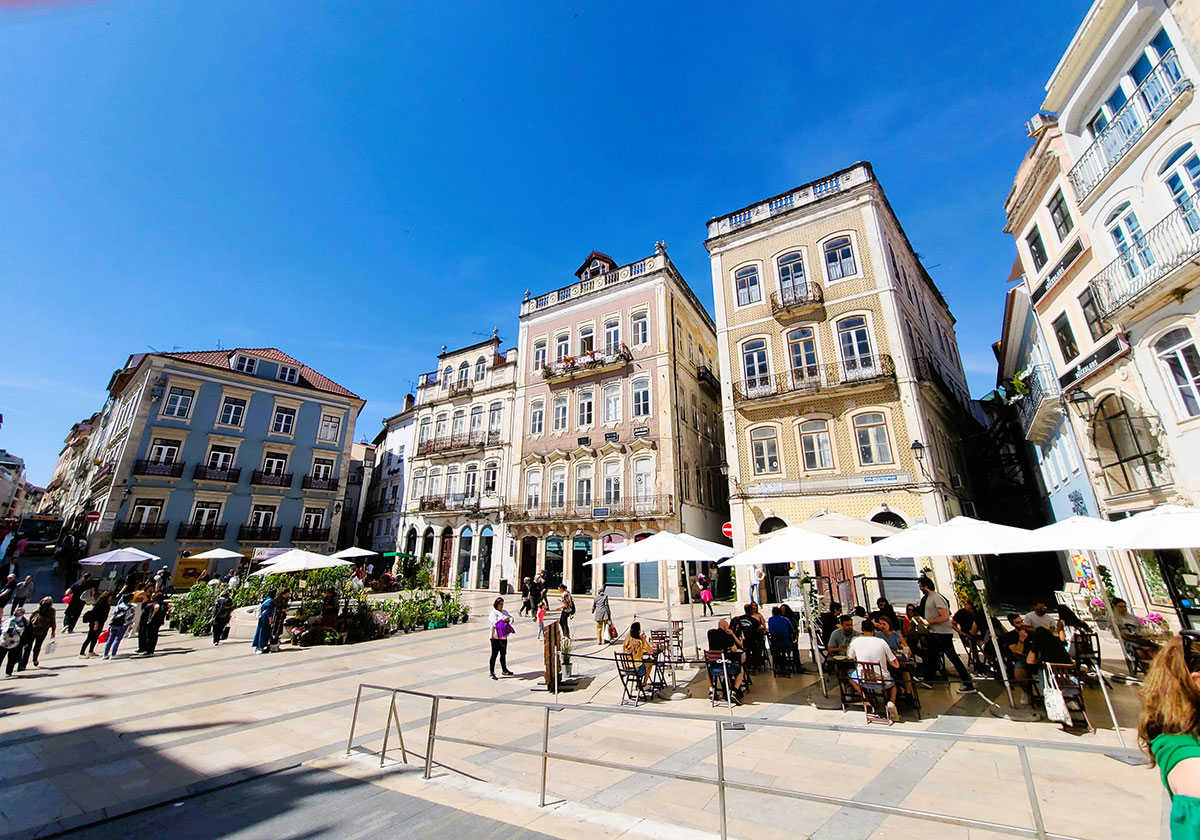 Praca 8 de Maio.
Praca 8 de Maio.Saturday, May 7th, was the day of the annual Flower Festival, and the old town was magical. Women dressed in traditional garb carried baskets of fruit on their heads; flower petals arranged in intricate designs decorated the cobblestone streets; stalls selling freshly baked bread, pastries, and handcrafts were set up in the little plazas off Rua Ferreira Borges; there were marching bands; and dancing, and singing in the streets.
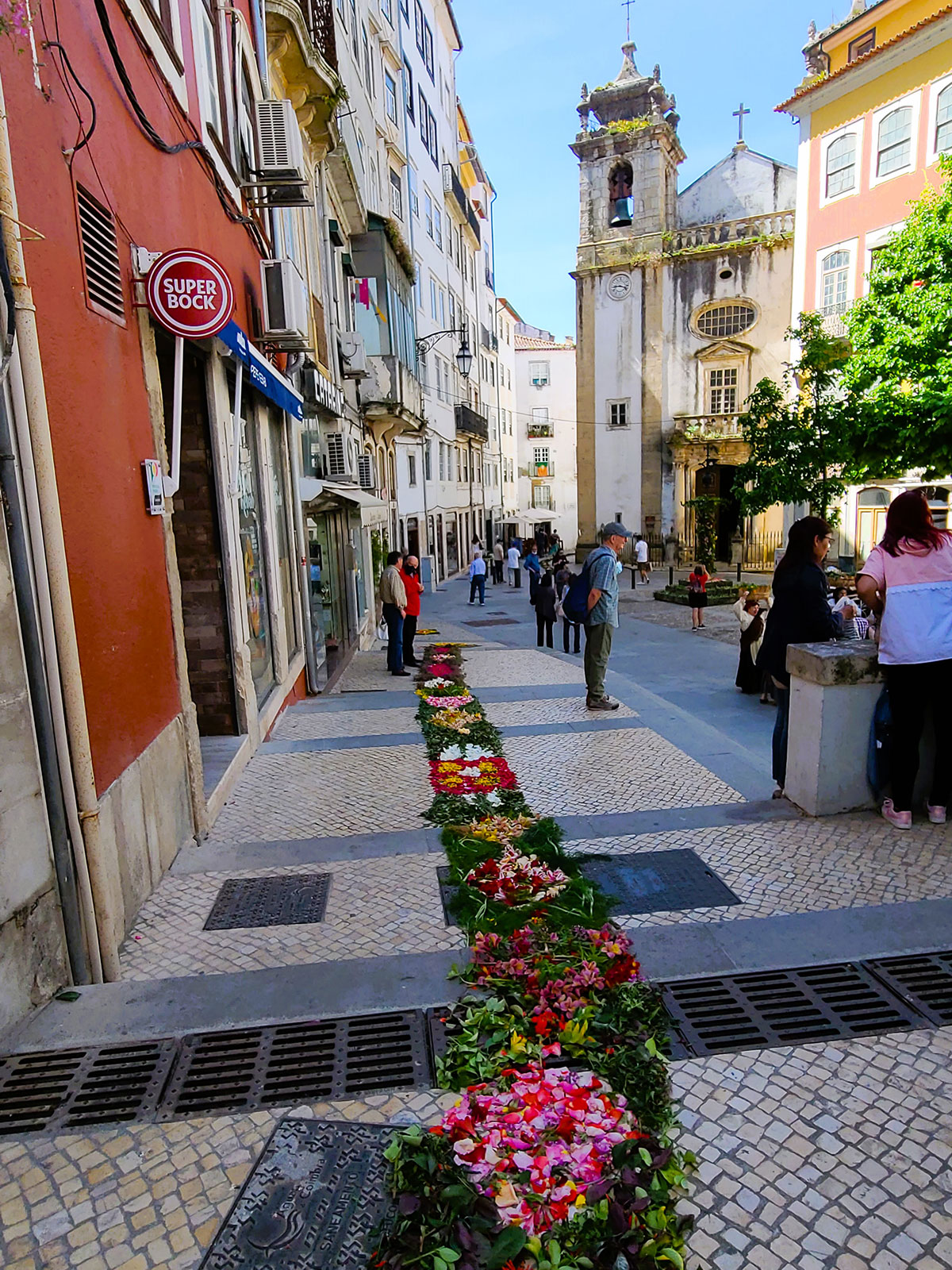
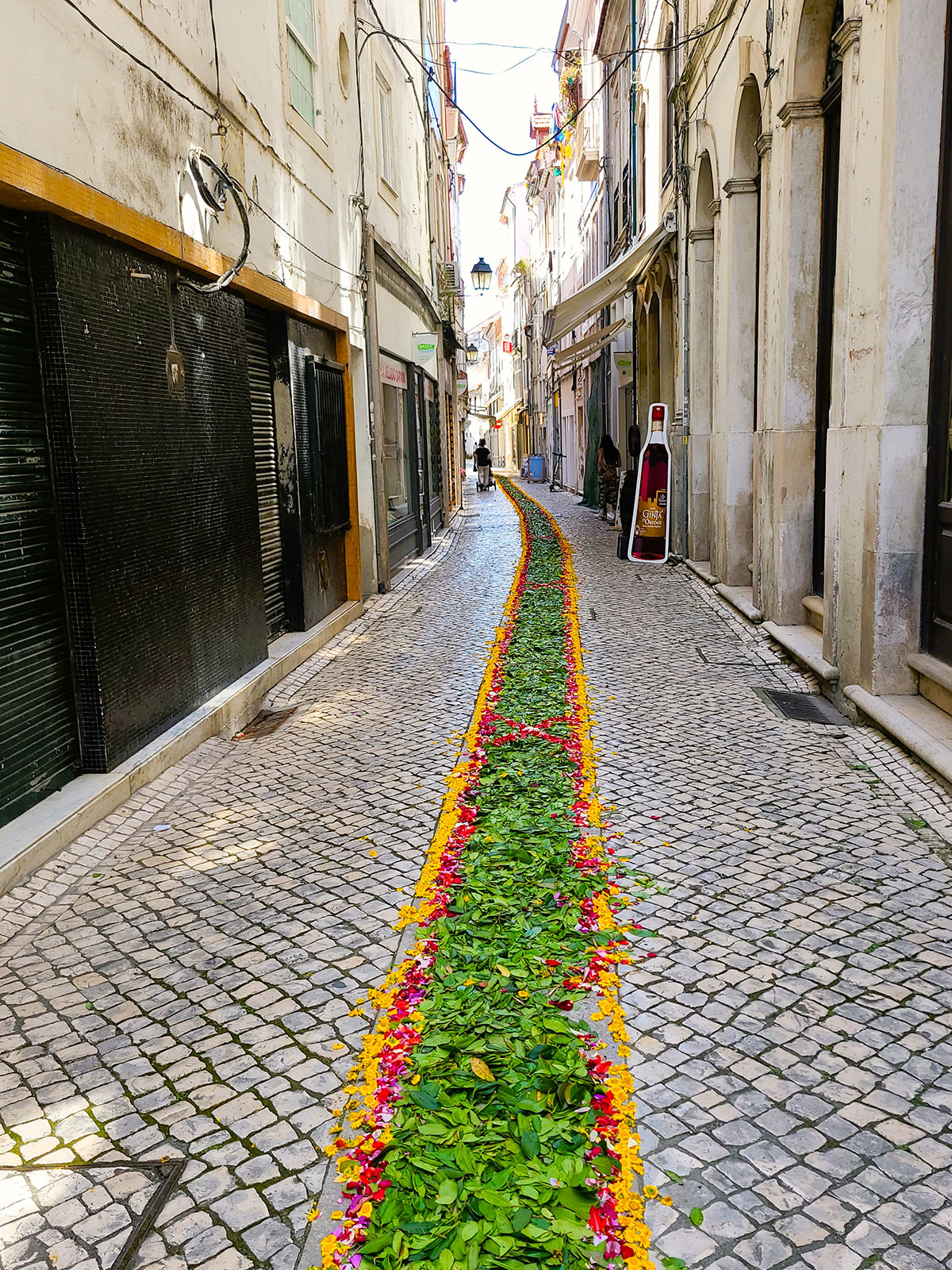
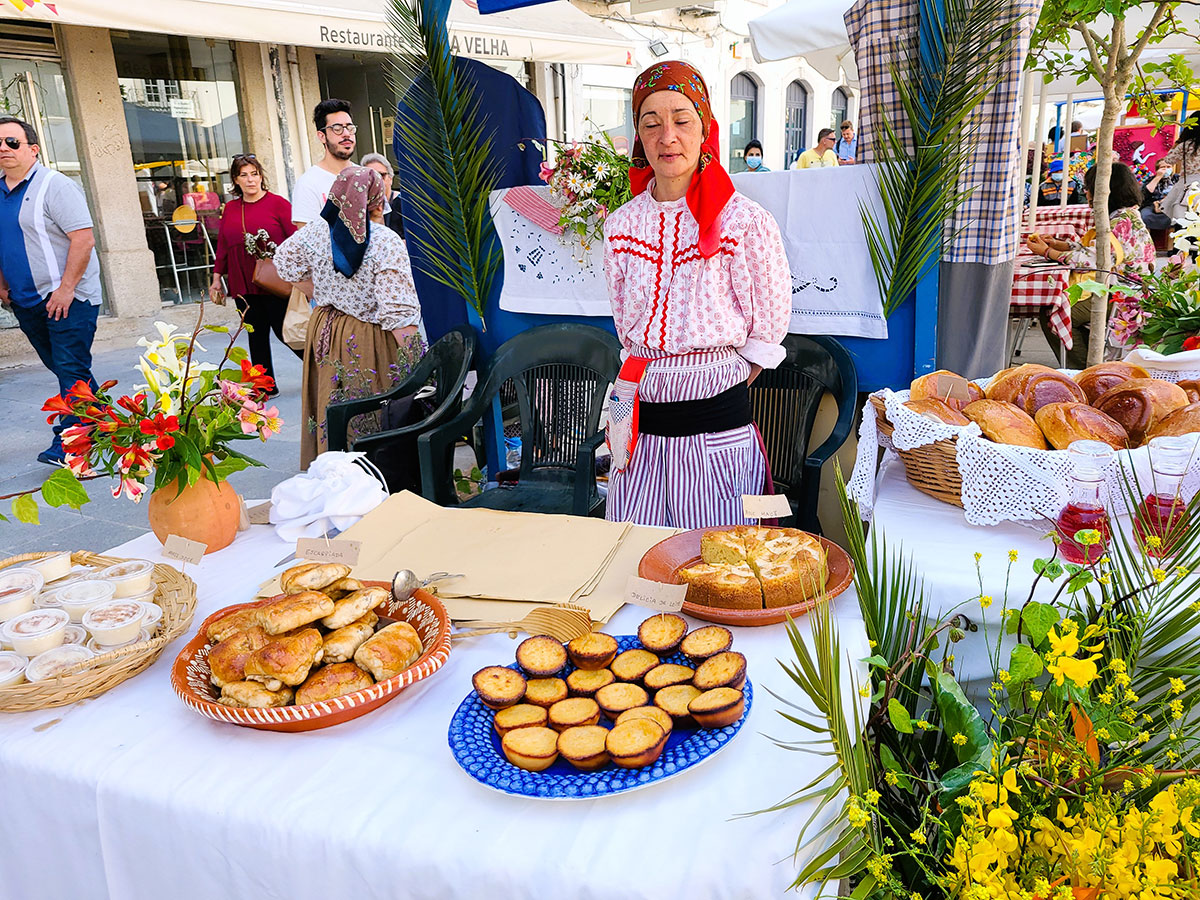
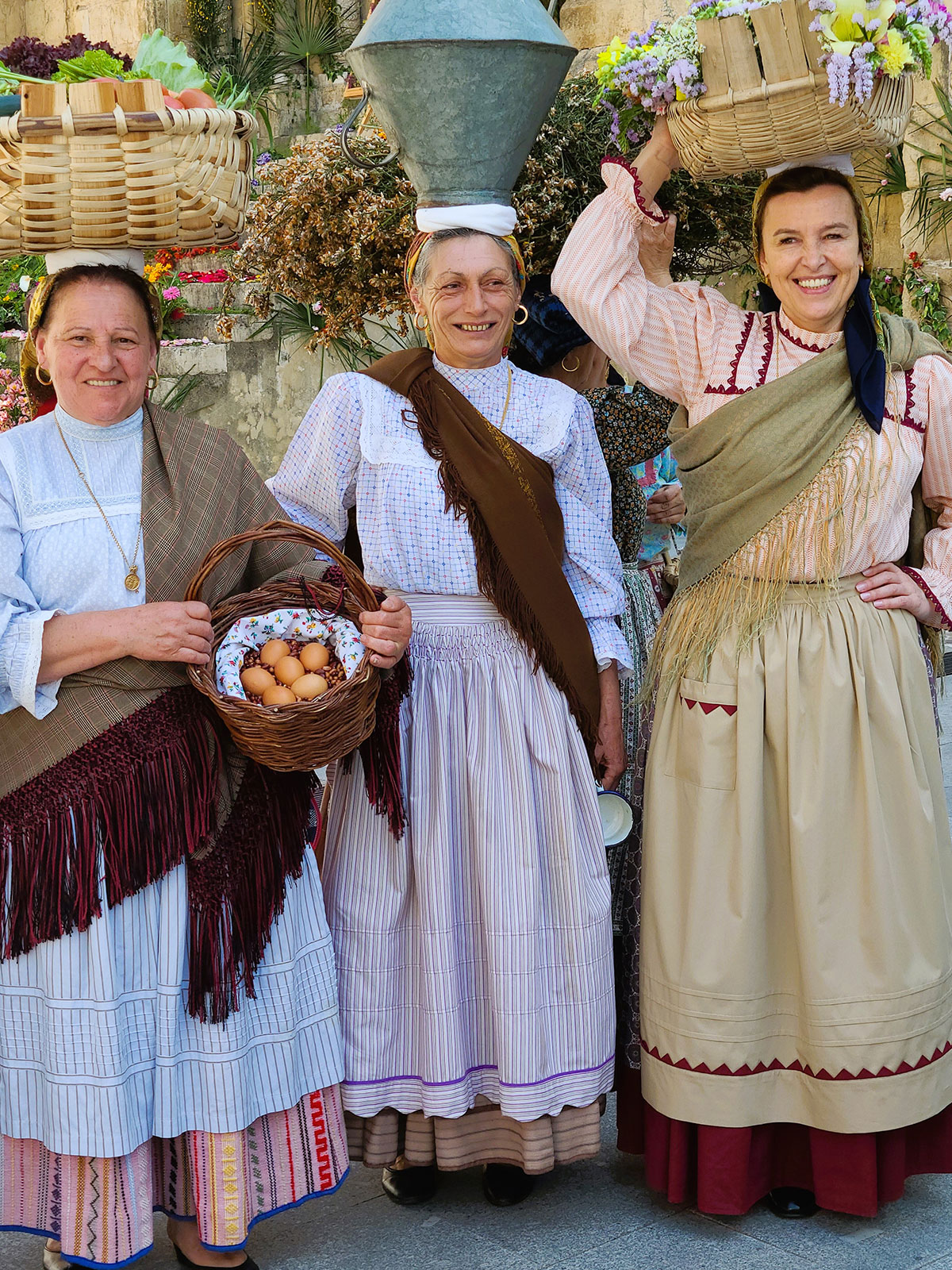
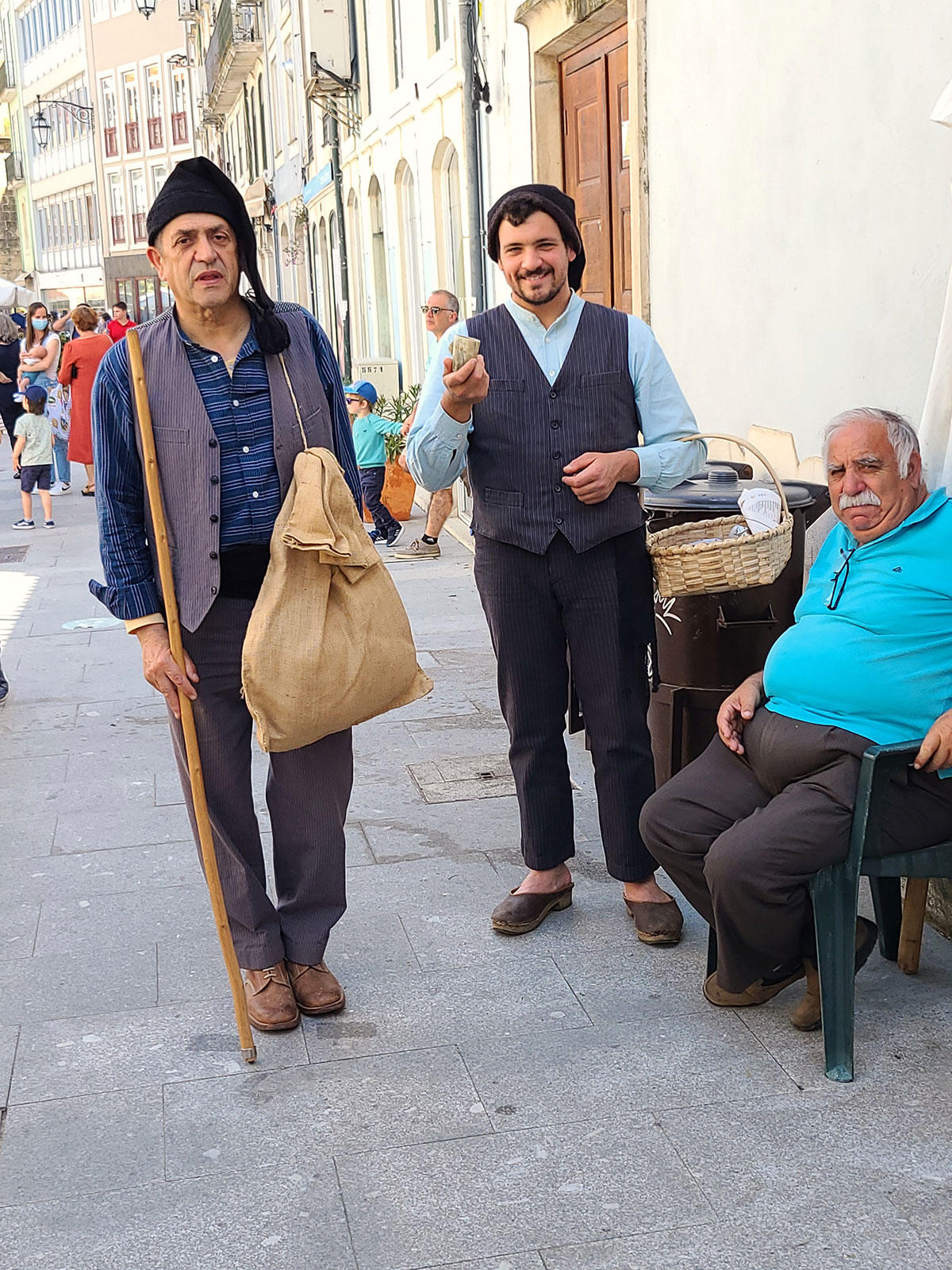
The Mosteiro de Santa Cruz – a 12th-century church with a late Gothic / Manueline style ornate white stone façade, presides over Praca 8 de Maio – the main square. Traditional Portuguese Azulejos-blue and white tiles-cover the interior walls with scenes depicting events in Portuguese history. We spent a half hour inside the church which is the burial site of King Afonso Henriques and King Sancho I, whose ornate tombs flank the altar.
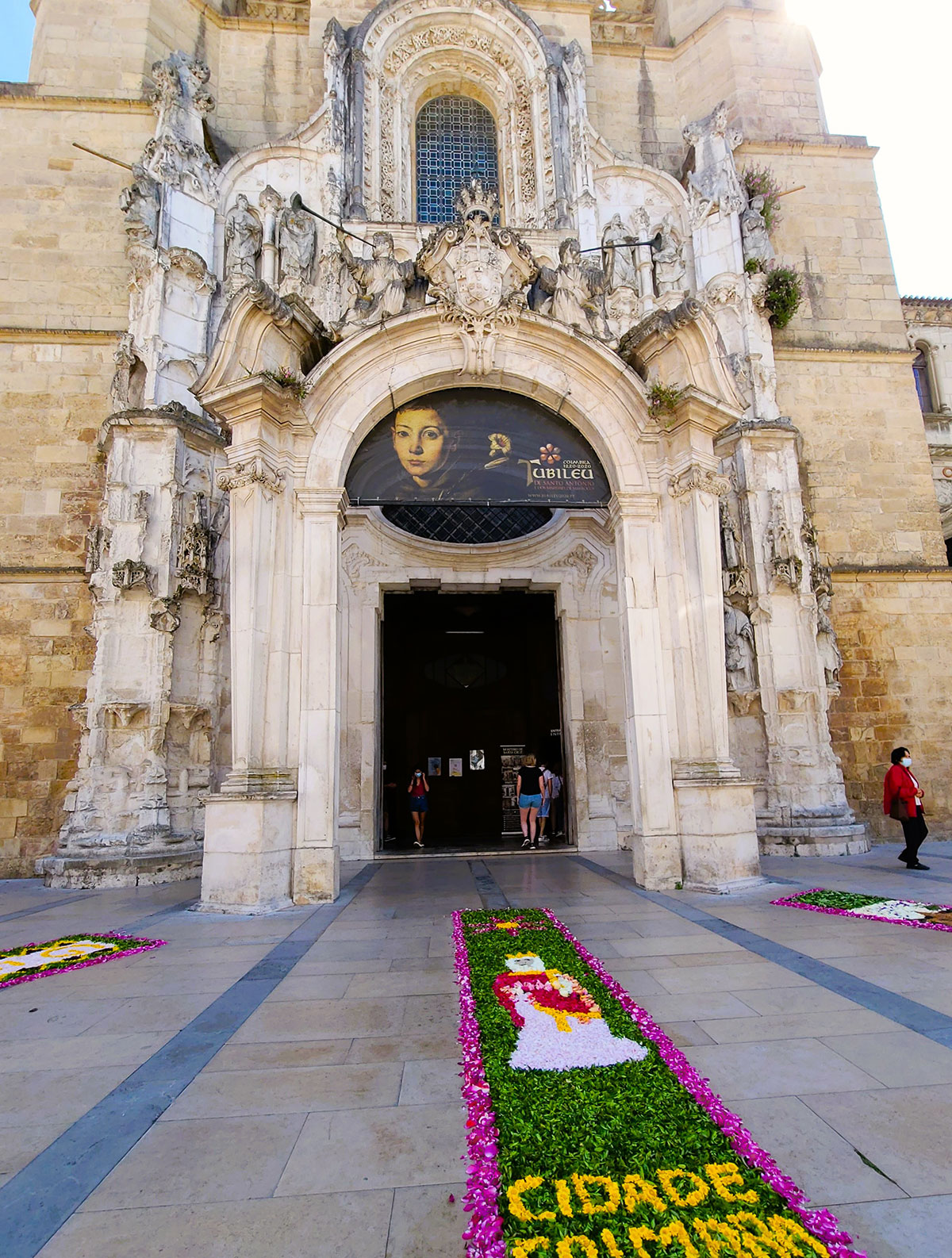
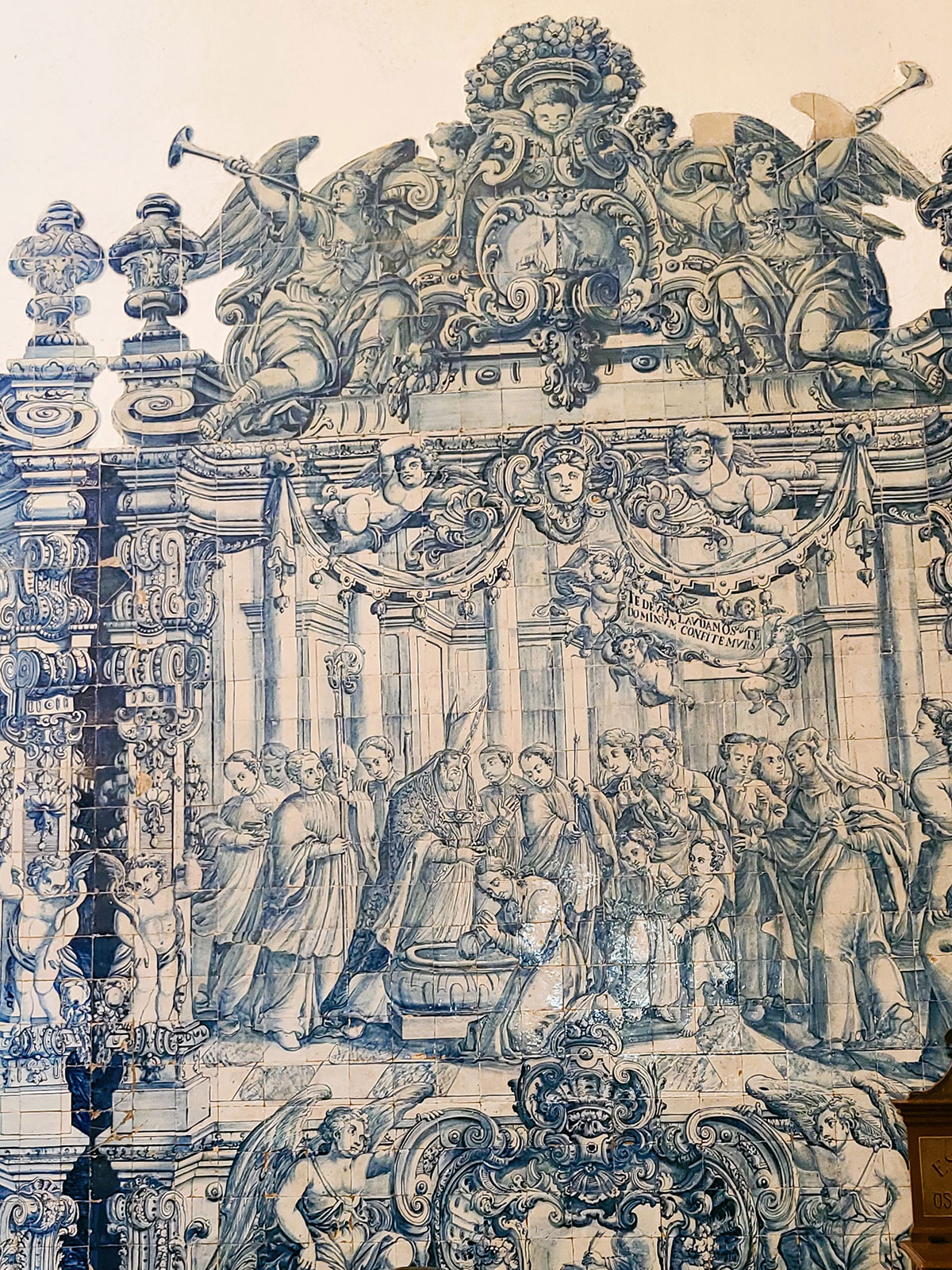
Praca 8 de Maio leads into Rua Ferreira Borges – the main street of the Lower Town, known as the Baixa district. Once Coimbra’s most elegant, boutique-lined shopping street, it has now been overshadowed by mega malls outside the city center. No modern mega mall can replace Rua Ferreira’s old-world charm. One cannot resist lingering at an outdoor café soaking up the ambience and relaxing over a meal or cappuccino and Coimbra’s delectable pastries.
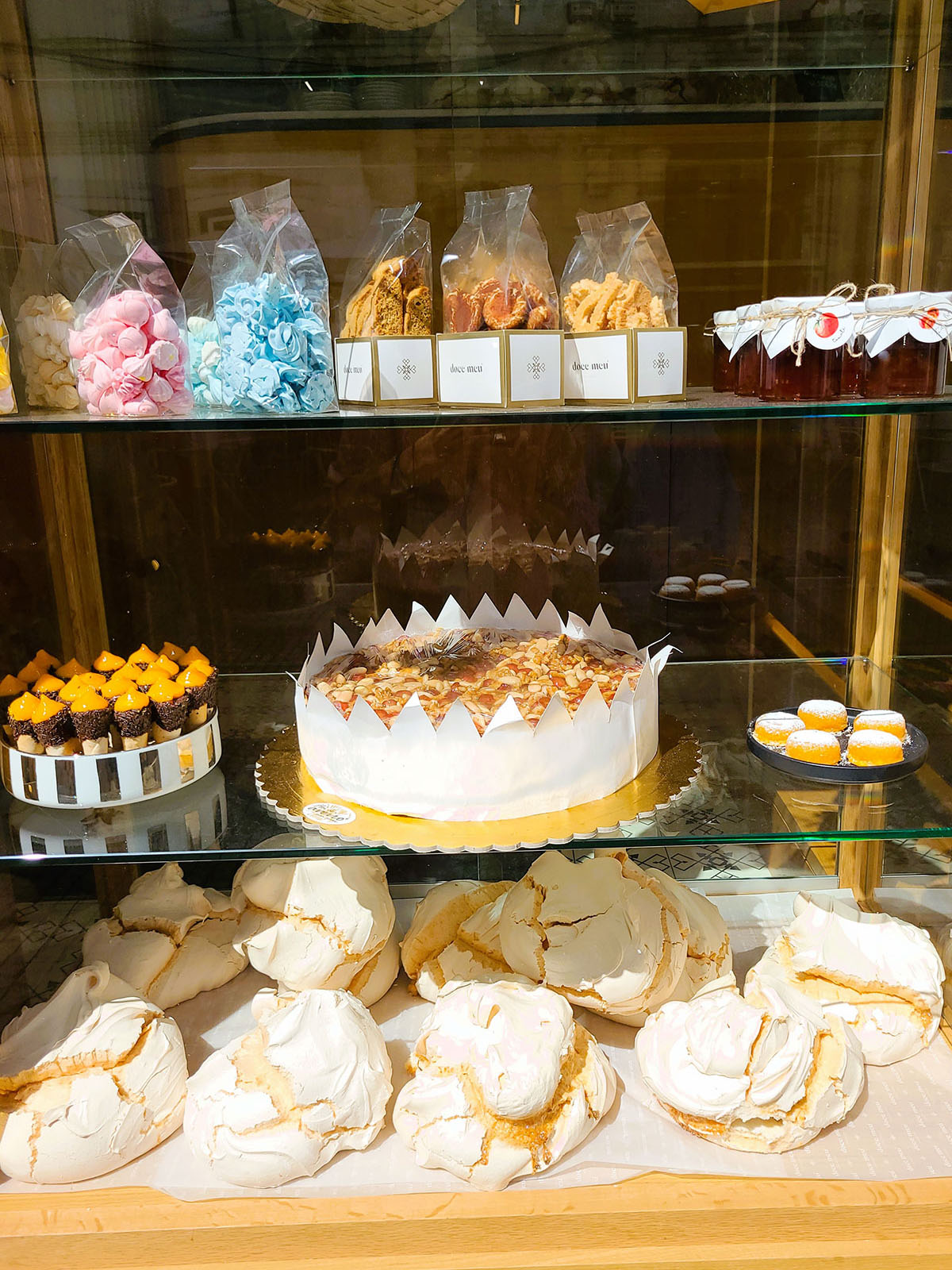 Pastry shop on Rua Ferreira Borges.
Pastry shop on Rua Ferreira Borges.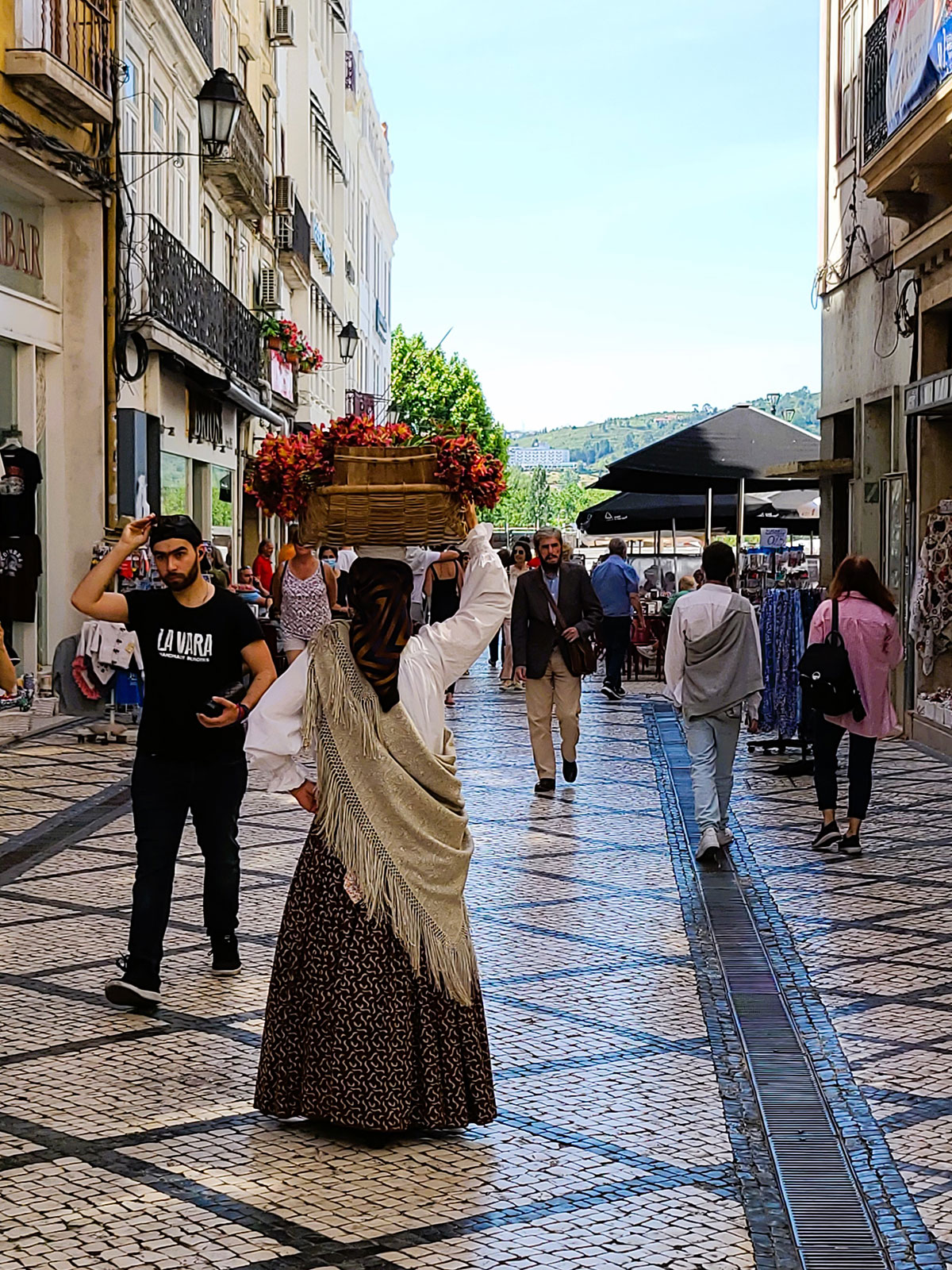 Rua Ferreira Borges.
Rua Ferreira Borges.Ferreira Borges leads to the riverside Square – Praca Largo de Portagem – where the Modego River, lined by gardens, beckons one to enjoy the tranquility of a stroll along this section of Portugal’s longest river.
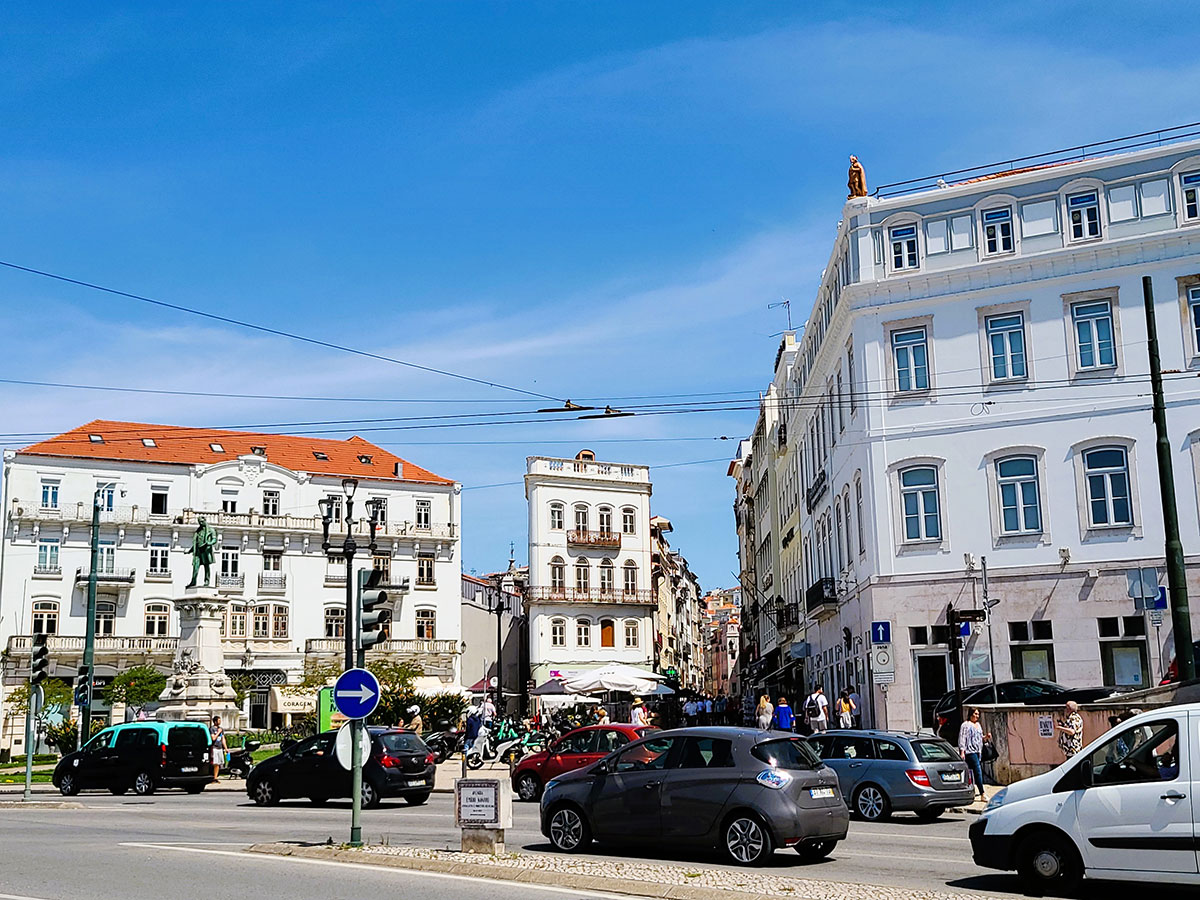 Praca Largo Portagem.
Praca Largo Portagem.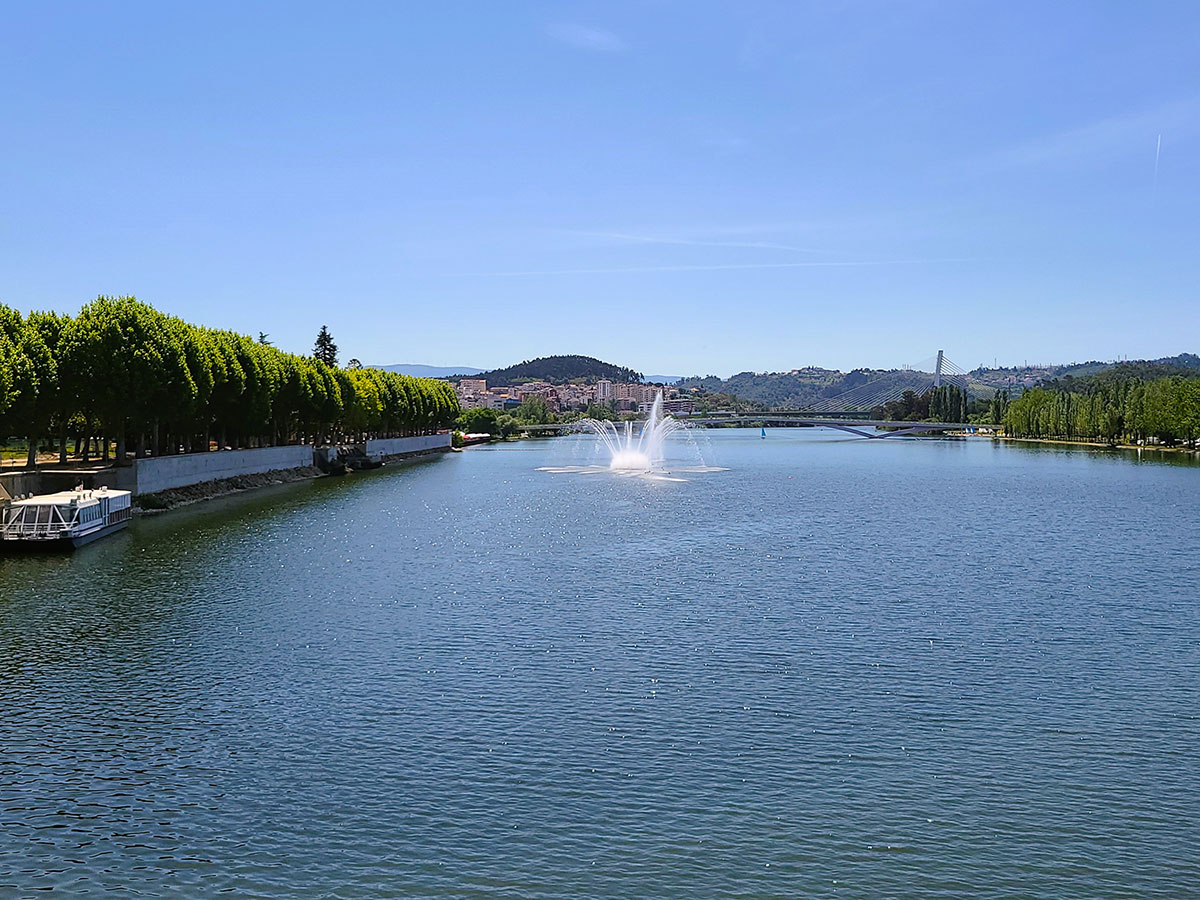
The Upper Town of Coimbra – The Alta – is best known for its prestigious, oldest, and most sought-after university in Portugal. There are several ways to reach the university. One can walk from the Baixa neighborhood along the steep, narrow lanes, however, those cobbles may soon have your legs screaming for mercy; there is a bus; or an elevator located next to the market, which we found to be the most efficient and enjoyable of the three options. After walking the isles of the market on Rua Olimpio Nicolas Rui Fernandes, we bought elevator tickets at the kiosk outside the market and took the elevators (the first one is a vertical elevator, the second is a sloping elevator to the top.) The views of the town and its surroundings are a fantastic bonus.
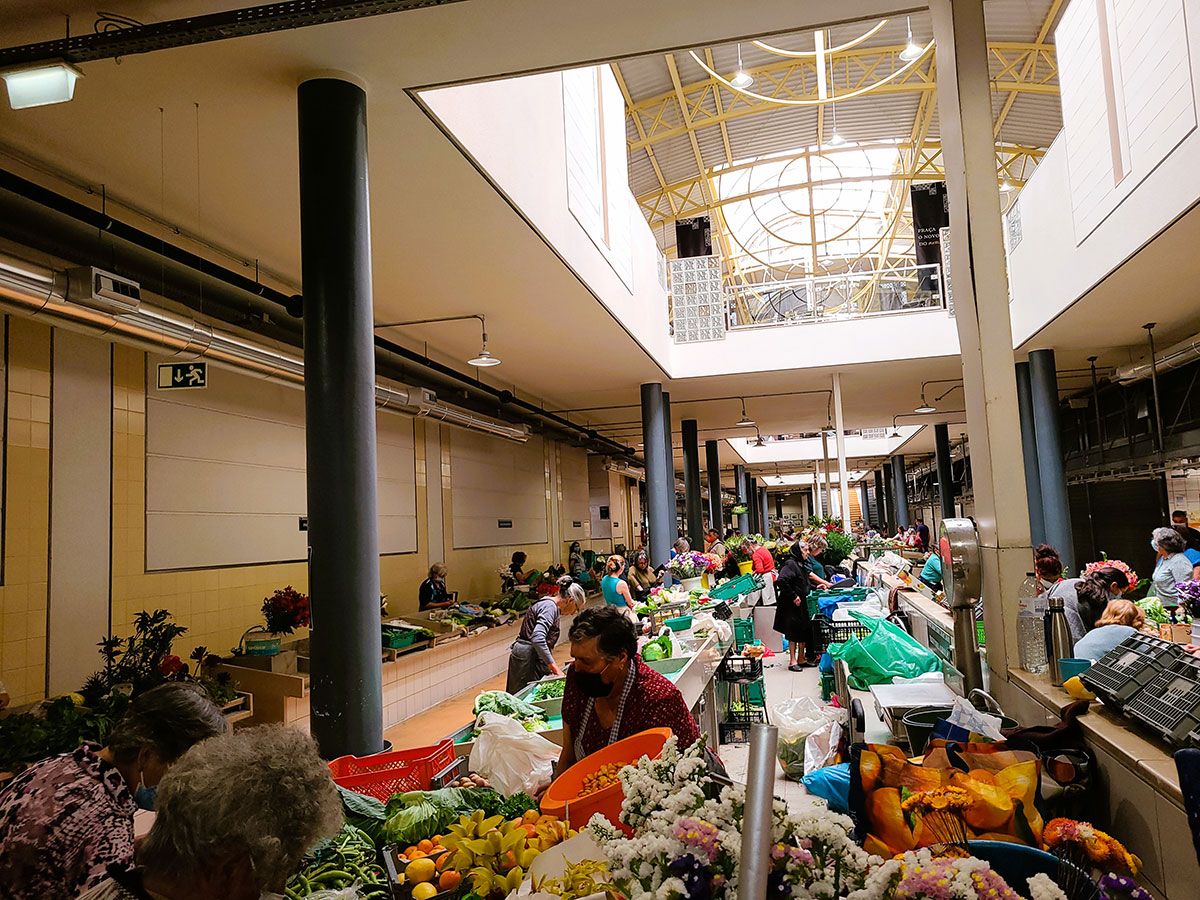
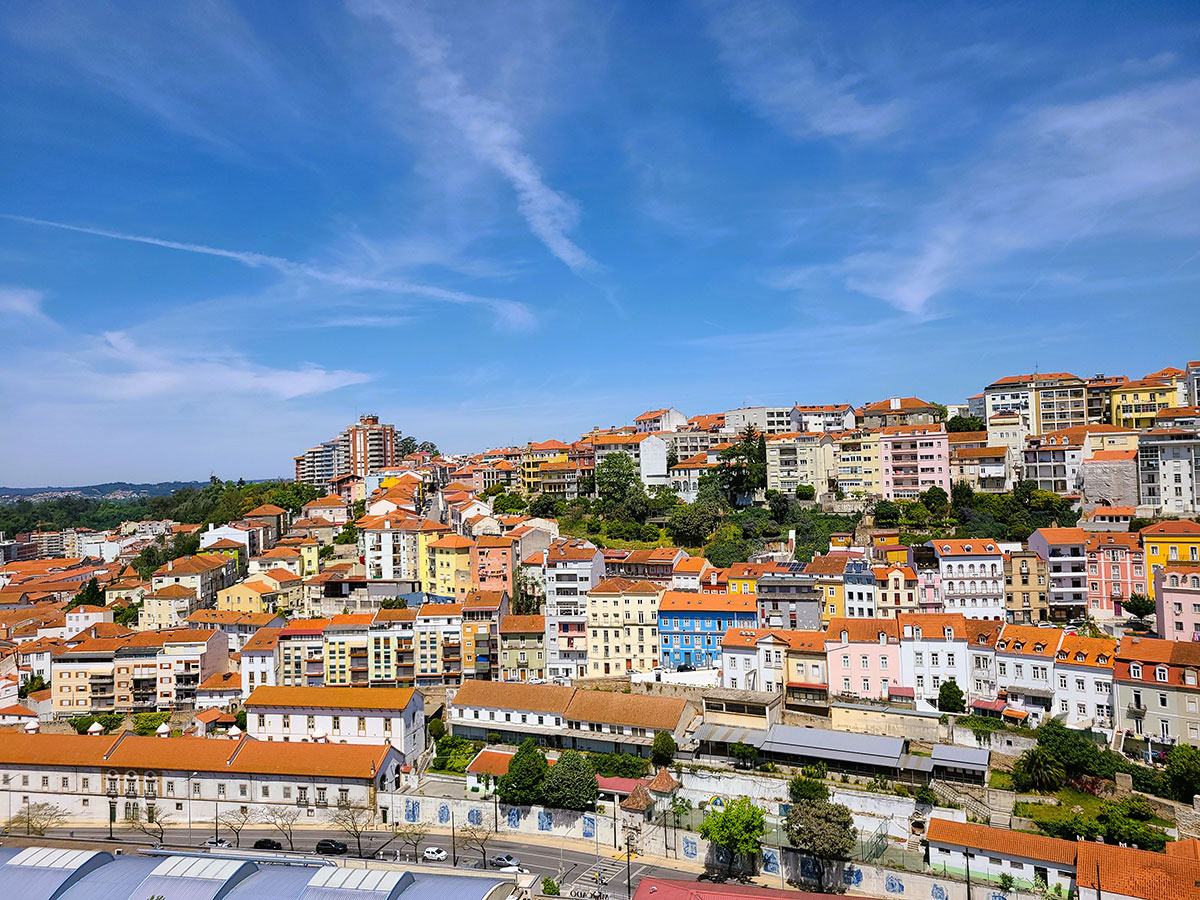
The university library – Biblioteca Joanina – draws visitors from across the globe with its rich wooden oak bookshelves, frescoed ceilings, tables made from rosewood and ebony, colored marble floors, and thousands of books, some of which are centuries old.
**One can book a guided tour online or buy a ticket and do a self-guided tour.
The famous Clock Tower, a landmark at the city’s highest point, is affectionately known as Cabra (the goat) by students because its bells remind them it is time to return to class. It has stood for centuries in the middle of the university campus in the Paco das Escolas courtyard.
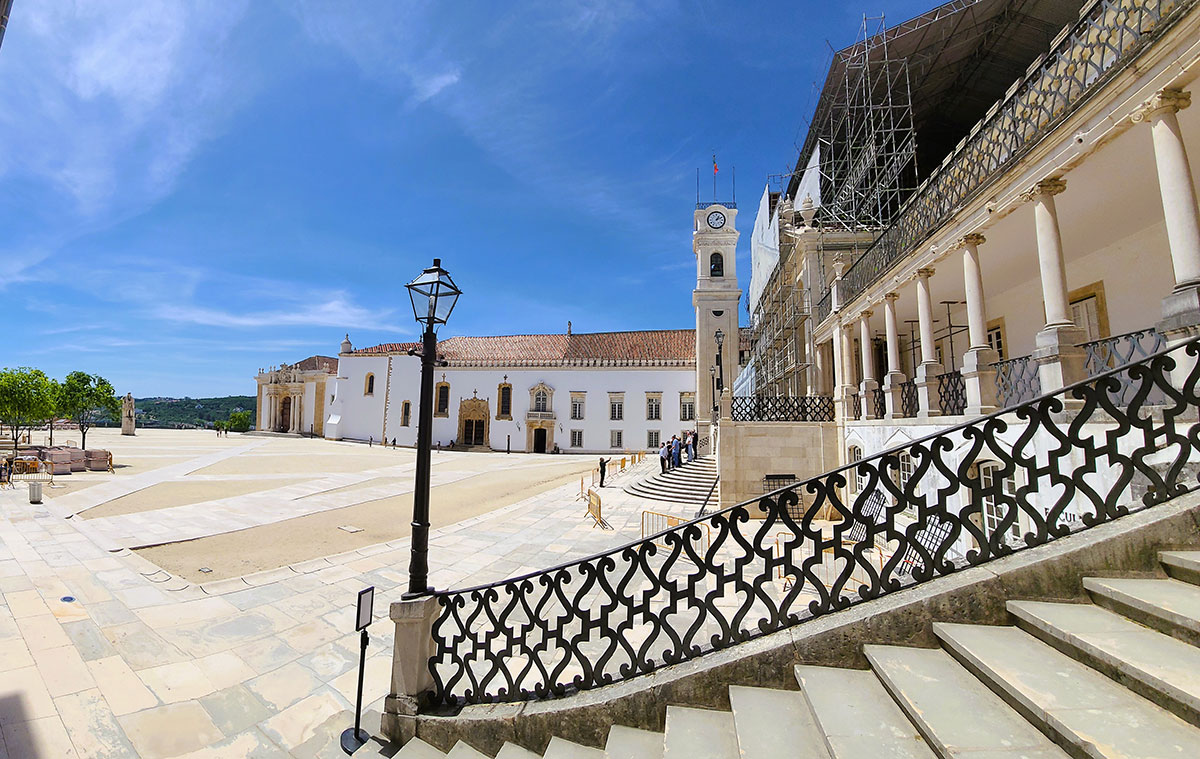
A statue of the university benefactor, King Joao III, stands in the courtyard across from the clock tower. He proudly faces the 16th-century university he founded rather than the panoramic landscape behind him.
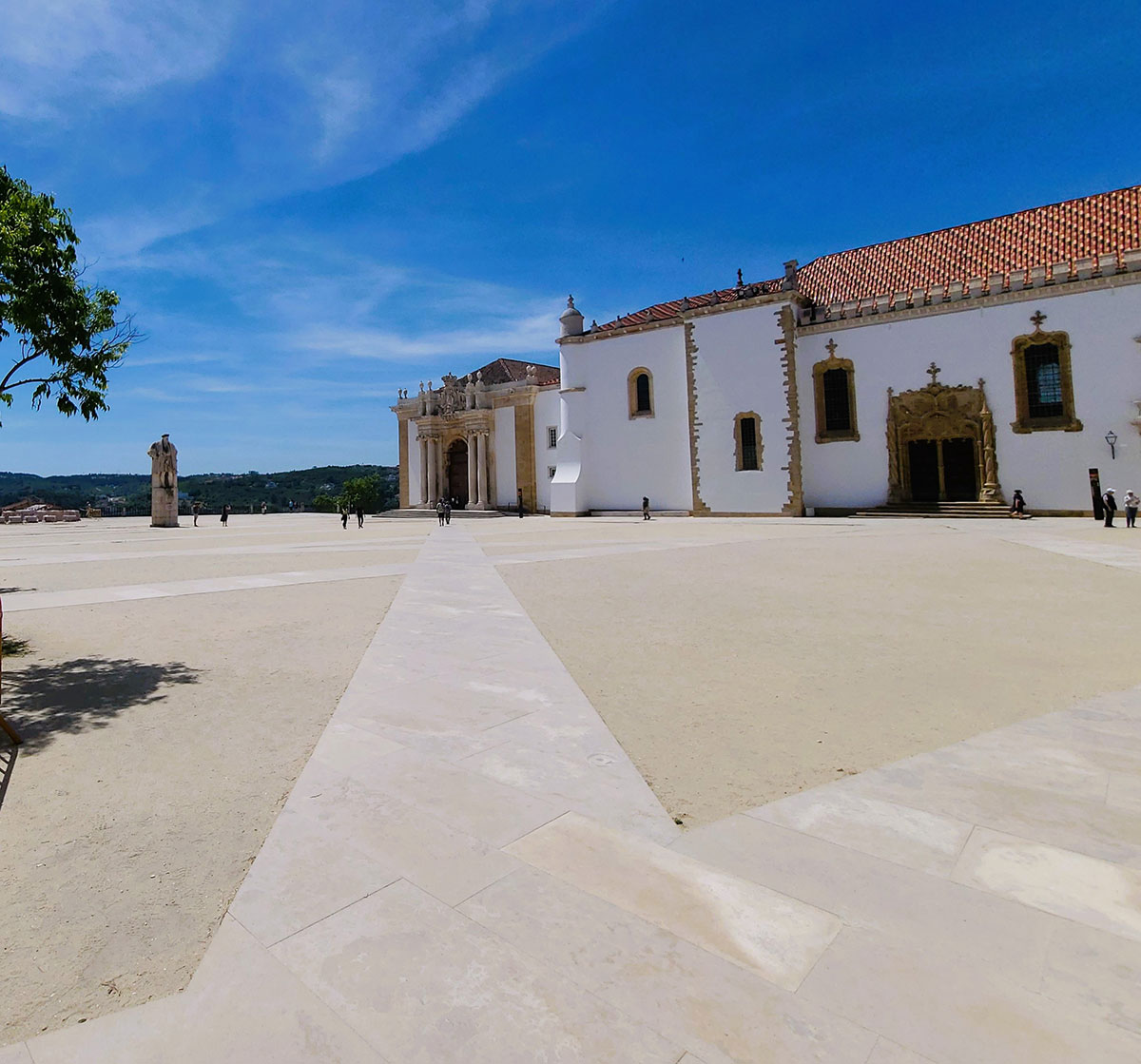
Unfortunately, we didn’t get to visit Coimbra’s Museu Nacional Machaelo de-Castro, housed in a Renaissance palace, where the basement reveals the ruins of an ancient Roman city. The Museum is said to hold some of Portugal’s most impressive art and sculpture.
Note: The Museum is not open on Mondays.
